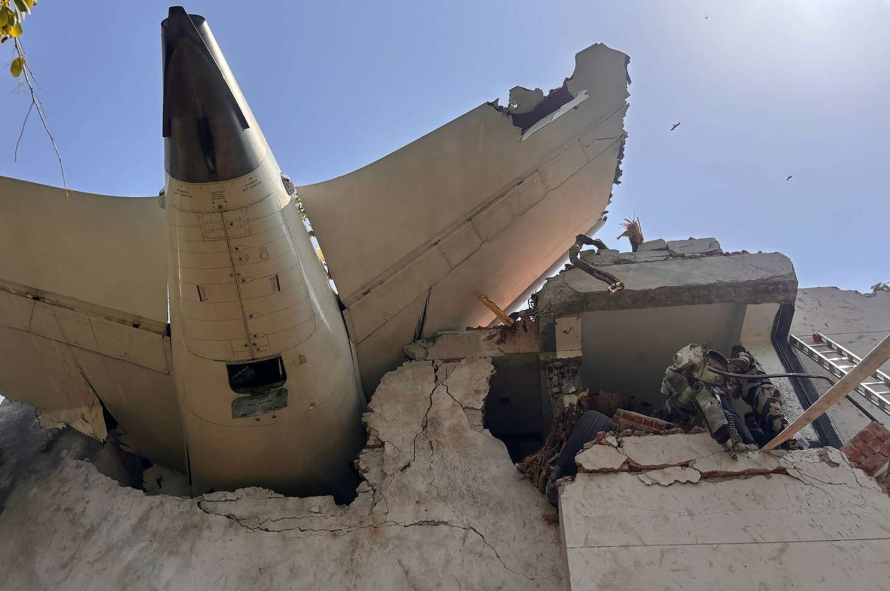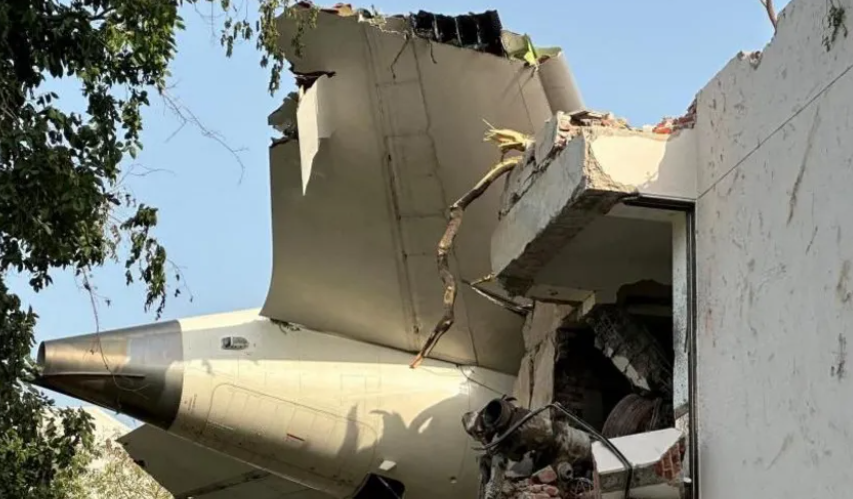Air India crash: FAA issued alert on potential disengagement of fuel control switch locking feature in 2018

NEW DELHI: The Preliminary Report from Aircraft Accident Investigation Bureau (AAIB) on Air India’s Boeing 787-8 aircraft accident on June 12 highlighted that initial cut in the flow of fuel to the engines right after take off has been identified as one of the major causes of the accident which killed 260 people.
According to the report, the switches in the cockpit which control the flow to both the engines transitioned from ‘RUN’ to ‘CUTOFF’ position one after another leading to decrease in the aircraft’s take-off altitude and the required thrust. Based on the cock voice recorder, the report also indicated that both the pilots were caught unaware of the transition in the position of the fuel control switch.
“In the cockpit voice recording, one of the pilots is heard asking the other, why did he cutoff. The other pilot responded that he did not do so,” the preliminary report stated.
According to the preliminary report, after the initial fuel cut off to the engines, the aircraft’s Enhanced Airborne Flight Recorders recorded that after a few seconds, the switches again transitioned from from ‘CUTOFF’ to ‘RUN’, leading to a renewed supply of fuel to the engine and thrust.
“When fuel control switches are moved from CUTOFF to RUN while the aircraft is inflight, each engine's full authority dual engine control (FADEC) automatically manages a relight and thrust recovery sequence of ignition and fuel introduction,” the report stated.
However, the relighting of the engines was too late and the aircraft with full speed crashed outside the perimeter of Ahmedabad airport into a medical college building, killing 241 crew and passengers on board and 19 people on ground.
The report highlighted that US’ aviation safety regulatory body, Federal Aviation Administration (FAA), had earlier in 2018 issued an alert regarding potential disengagement of the fuel control switch locking feature, the one similar to onboard the fatal Air India’s Boeing 787 aircraft.
The FAA, in an 2018 advisory, had alerted airline operators and owners about potential for disengagement of the fuel control switch locking feature onboard several aircraft models, including Boeing 787.
“If the locking feature is disengaged, the switch can be moved between the two positions without lifting the switch during transition, and the switch would be exposed to the potential of inadvertent operation. Inadvertent operation of the switch could result in an unintended consequence, such as an in-flight engine shutdown,” according to the advisory from FAA, dated December 17, 2018.
The preliminary report stated that the FAA did not consider the airworthiness concern related to fuel control switch as an unsafe condition that would warrant airworthiness directive which necessitates mandatory action.
“As per the information from Air India, the suggested inspections were not carried out as the SAIB (Special Airworthiness Information Bulletin) was advisory and not mandatory. The scrutiny of maintenance records revealed that the throttle control module was replaced on VT-ANB (the aircraft’s registration) in 2019 and 2023. However, the reason for the replacement was not linked to the fuel control switch. There has been no defect reported pertaining to the fuel control switch since 2023 on VT-ANB,” the AAIB’s preliminary report stated.
According to the advisory alert note from FAA’s, the fuel control switch is manufactured by North Carolina-based Honeywell, which is engaged in avionics and aviation products manufacturing and development.
The preliminary report from AAIB has drawn a bit of skepticism from industry experts.
“The preliminary report is sketchy, with not much data and does not say as to who was flying the aircraft at the moment of crash,” said Amit Singh, Founder, Safety Matters Foundation and who had earlier served as Chief of Safety and Director of Flight Operations at erstwhile AirAsia India.
The aircraft was operated by two pilots, Captain Sumeet Sabharwal and First Officer Clive Kunder.
“The report has not released FDR (flight data recorder) data and the CVR (cockpit voice recorder) data. The released data does not show continuity. Even the CCTV image showing RAT (ram air turbine) deployment does not have the time stamp,” added Singh.
Singh outlined that all the recovered parts of the aircraft will be sent for testing for further detailed analysis.
The AAIB team investigating the Air India crash comprises Sanjay Kumar Singh as Investigator-in-Charge, Jasbir Singh Larhga as Chief Investigator, Vipin Venu Varakoth, Veeraragavan K and Vaishnav Vijayakumar as investigators.
You may also like...
Diddy's Legal Troubles & Racketeering Trial

Music mogul Sean 'Diddy' Combs was acquitted of sex trafficking and racketeering charges but convicted on transportation...
Thomas Partey Faces Rape & Sexual Assault Charges

Former Arsenal midfielder Thomas Partey has been formally charged with multiple counts of rape and sexual assault by UK ...
Nigeria Universities Changes Admission Policies

JAMB has clarified its admission policies, rectifying a student's status, reiterating the necessity of its Central Admis...
Ghana's Economic Reforms & Gold Sector Initiatives

Ghana is undertaking a comprehensive economic overhaul with President John Dramani Mahama's 24-Hour Economy and Accelera...
WAFCON 2024 African Women's Football Tournament

The 2024 Women's Africa Cup of Nations opened with thrilling matches, seeing Nigeria's Super Falcons secure a dominant 3...
Emergence & Dynamics of Nigeria's ADC Coalition

A new opposition coalition, led by the African Democratic Congress (ADC), is emerging to challenge President Bola Ahmed ...
Demise of Olubadan of Ibadanland
Oba Owolabi Olakulehin, the 43rd Olubadan of Ibadanland, has died at 90, concluding a life of distinguished service in t...
Death of Nigerian Goalkeeping Legend Peter Rufai

Nigerian football mourns the death of legendary Super Eagles goalkeeper Peter Rufai, who passed away at 61. Known as 'Do...




